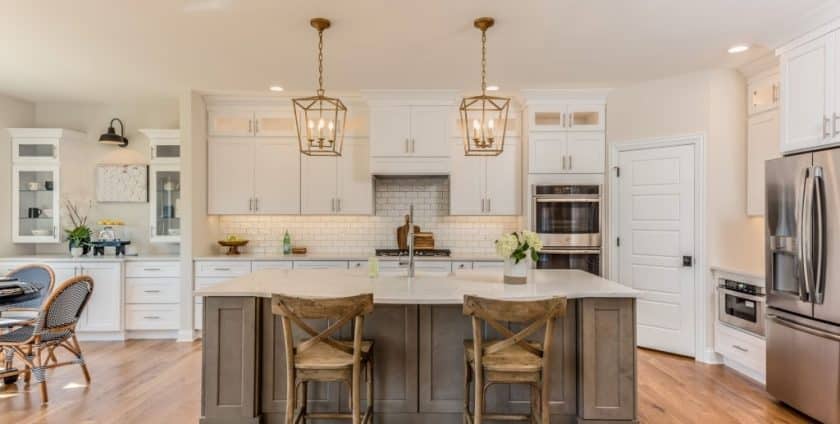
Destructive and costly tasks like kitchen remodeling should be done with minimal stress. This means efficiency, both in the design phase and in the renovation phase, whether you do it yourself or decide to work with a designer. Let’s go through simple design steps and create a checklist of everything you want to complete your amazing and successful remodel.
KITCHEN REMODELING PROCESS: STEP-BY-STEP GUIDE
One of the easiest ways to add value to your home is by remodeling your kitchen. If you delegate all responsibilities to professionals, as most people do, you will need to complete some preliminary construction steps, such as finding, verifying, and hiring designers and contractors. Here are the right sequences of kitchen remodeling that include a complete thorough process. Each project is unique, and the contractors may have good reasons to differ slightly from the steps below.
Tear Out And Demolish
Whether you do it yourself or hire a professional if you want to clean everything in your kitchen, prepare for demolition. Remove and discard anything you don’t want to keep at this stage. This is the step to clean up appliances, demolish old furniture, and tear down floors and drywall. Decide for what you will throw away, such as bins or trailers.
Once this is done, the contractor will tour the building and evaluate what will happen next. At this time, repairing problems such as leaks, and bad wiring is carried out.
Structural Build-Out
This phase includes the furniture-making team working on the kitchen framing, removing the walls, adding/removing/replacing windows, building the kitchen island, and more. This stage covers important construction tasks based on your kitchen configuration and preferences. Experienced home craftsmen also do the framing work quickly.
Framing and Plumbing
When changing the kitchen layout, the contractor’s next step is to match the electrical framing and plumbing fixtures to the new design. Think of this step as having to do with being on a wall or inside a wall.
In some cases, this can be as simple as moving a skeleton on the wall around the new central island. On a large-scale renovation project, this may mean moving plumbing fixtures a foot away from their original location or pouring new concrete for expansion to increase the area. Electrical framing and plumbing are time-consuming and best left to a professional construction team.
Finishing The Walls And Ceiling
Once wiring and plumbing are complete, it’s time to finish the walls. This includes creating your favorite color scheme and then matching it to your cabinets and appliances. Hang, glue, and finish drywall according to your project plan. This includes any drywall needed for the bar counter or other part of the kitchen. This is the optimal step for priming drywall, even if it hasn’t been painted for a long time.
Flooring
Installing flooring is one of the last steps to prevent wear and tear. The flooring can be installed after the cabinet maker. This will depend on the floor type chosen and the contractor for the installation. How much time it will take for installation depends on the type of flooring you choose. There are several types to choose from, such as vinyl panels, ceramic tiles, hardwood floors, and laminates.
Installing Doors and Windows
After Flooring, it’s time to install the doors or windows. You may not need to do anything at this stage if you stick to the same structure as your existing kitchen. When adding new doors or windows to a space, it must be properly insulated. Open kitchen windows not only make the space less comfortable but can cost hundreds of dollars on heating and cooling costs.
Cabinets & Countertops
Professional cabinet installers will install new cabinets. The amount of time this process will take will largely depend on the size of your kitchen and the number of cabinets you need to install.
No measurements are taken on the countertop until the cabinet is installed. This is the only way to ensure precision and perfect fit. Production and delivery times for countertops depend on the material selected.
Backsplash, Fixtures, and Appliances
A backsplash is the major structural element to be installed. If you choose a detailed design, it may take a little more time. Professional installers install fixtures. After the apron is installed, the electrician can return to complete the job. Install sockets, switches, and lights. In the meantime, you might consider adding all the new appliances to create a whole new kitchen from top to bottom.
Final Inspection After The Completion Of Kitchen Remodeling
Kitchen remodeling work is complete, now it’s time to finish the kitchen remodeling. A final inspection is important and can help you avoid common mistakes people make during remodeling projects.
